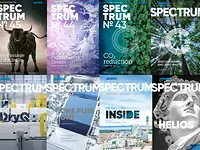ROI EXCEEDS ALL EXPECTATIONS
The new units were still in the optimization phase just a couple of months after start-up, but even so, Perlen had already considerably exceeded some of its process-related targets. For example, the aim was to increase steam recovery volumes from 6 to 9 t/h, but the new units are already operating consistently at 14.5 t/h. This means more steam for use in the paper machine dryer section and for heating the paper machine hall, which saves Perlen money on buying steam from the local waste-powered energy plant. It also lowers the temperature of the refined fibers in the latency chest, and once optimized, that should improve fractionation efficiency in downstream screening, easing the load on the reject circuit, resulting in even more energy savings. The lower temperature should also limit fiber yellowing and reduce consumption of bleaching chemicals, as well as minimizing wear on thickening units. Zoran Jovanovic, TMP Line Manager, also adds that the new units are running far more cleanly: “Instead of having to be cleaned every three days (taking 45 minutes each time), now it’s only once every 10-11 days, at least.”
Exceeding the project goals also means a faster return on the investment (ROI) than Perlen had planned. The target was 1.7 years, but that is now expected to be less than one year.
“It’s saving us quite a lot of money,” confirms Stokowy. “More than that, it’s saving our nerves! It’s working well and we have fewer worries about maintenance.”
Pfeiffer explains that this project reflects ANDRITZ’s philosophy of focusing on the papermaker’s day-to-day reality, along the whole production line. “We believe in “small steps, big success”. It’s not all about just getting a one-time sale, but on continuing a long-term partnership. So, we want to provide what will help mill the most, within the budget.” It also demonstrates that an innovative ANDRITZ upgrade can help save both money and the environment.












